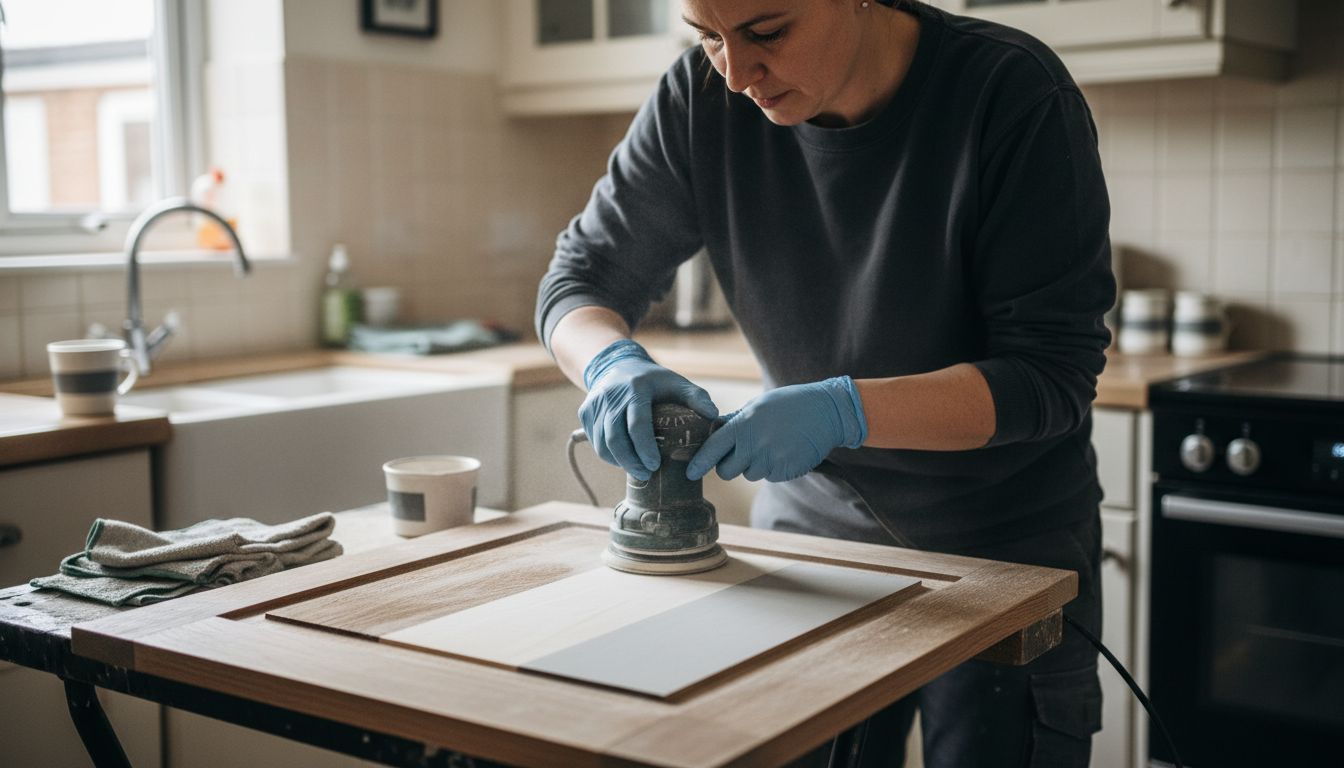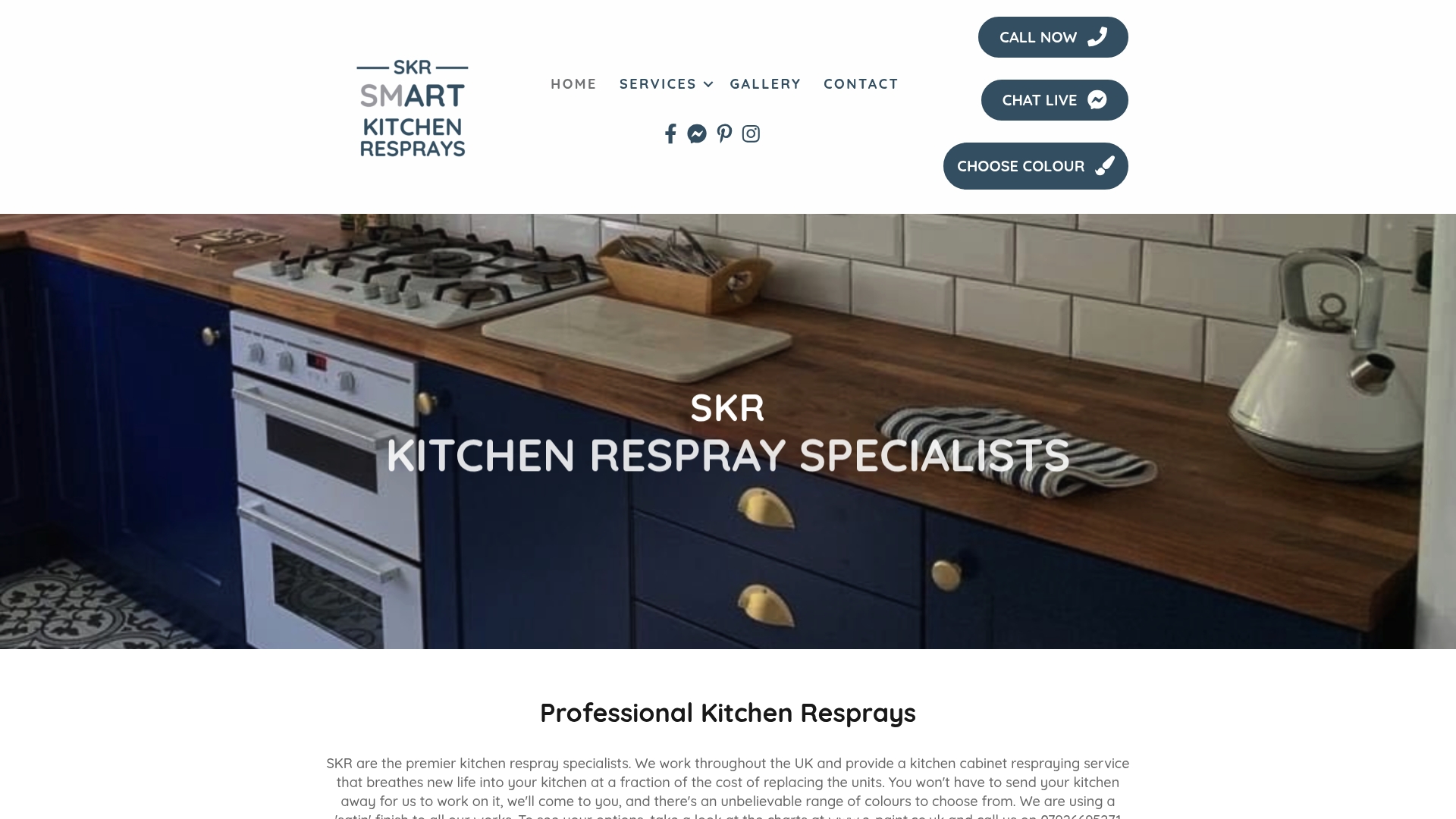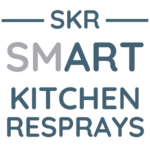Kitchen Hygiene and Respray: Complete UK Guide
Did you know that a full kitchen replacement can cost up to four times more than a professional respray? For homeowners wanting a stunning new look without the expense or hassle of major renovations, kitchen respray and hygiene services present a practical solution. These techniques not only refresh tired cabinets and surfaces but also support high cleanliness standards while saving both time and money.
Table of Contents
- Defining Kitchen Hygiene and Respray Services
- Types of Kitchen Respray Methods in the UK
- The Full Kitchen Respray Process Explained
- Critical Hygiene Standards and UK Regulations
- Common Pitfalls and How to Avoid Them
- Comparing Respray to Full Kitchen Replacement
Key Takeaways
| Point | Details |
|---|---|
| Cost-Effective Solution | Kitchen respraying offers significant savings, typically ranging from £1,500 to £2,500, making it a preferable alternative to full kitchen replacements. |
| Minimal Disruption | The respray process is less intrusive than renovations, with transformations completed in days instead of weeks. |
| Enhanced Aesthetics | Homeowners can achieve a modern look by completely changing the colour and style of existing kitchen units without extensive demolition. |
| Strict Hygiene Standards | Respray services in the UK follow comprehensive regulations ensuring safety and environmental protection throughout the process. |
Defining Kitchen Hygiene and Respray Services
Kitchen hygiene and respray services represent an innovative solution for homeowners seeking to transform their kitchen spaces without the substantial cost and disruption of a complete renovation. According to research from Understanding What is Kitchen Spray Coating, kitchen respraying involves updating existing kitchen units with a flawless, bespoke finish using advanced spray finishing techniques.
The core principle of kitchen respray services is straightforward: revitalise existing kitchen surfaces by applying a professional-grade paint finish that dramatically enhances aesthetics and functionality. Kitchen respraying offers a cost-effective alternative to full kitchen replacements, allowing homeowners to achieve a fresh, modern look without extensive demolition or significant financial investment. As experts note, this process can transform tired, worn cabinetry into vibrant, like-new surfaces in a fraction of the time required for traditional renovations.
Key benefits of kitchen respray services include:

- Dramatically reduced renovation costs compared to full kitchen replacements
- Minimal disruption to your home environment
- Rapid transformation of kitchen aesthetics
- Environmentally friendly approach by reducing waste
- Ability to completely change colour and style of existing units
For those considering a kitchen update, Kitchen Respray Regulations UK: Complete Guide 2025 provides comprehensive insights into the professional standards and best practices governing these innovative home improvement services.
Types of Kitchen Respray Methods in the UK
In the UK, kitchen respray methods have evolved to offer homeowners multiple comprehensive solutions for kitchen transformation. According to research from Kitchen Painting vs Kitchen Spraying Explained, there are distinct approaches to revitalising kitchen surfaces, each catering to different needs and budgets.
The primary kitchen respray methods in the UK can be categorised into three main options: Minimal, Assisted, and Full respray services. As detailed by experts at Faded Mist, these methods offer varying levels of intervention:
Here’s a comparison of the primary kitchen respray methods in the UK:
| Method | Intervention Level | Who Handles Doors | Typical Cost Range |
|---|---|---|---|
| Minimal Respray | Basic | Homeowner | Lowest |
| Assisted Respray | Moderate | Professionals | Moderate |
| Full Respray | Comprehensive | Professionals | Highest (of resprays) |
- Minimal Respray: A cost-effective two-tone approach where homeowners handle door removal and refitting
- Assisted Respray: Professional removal, respraying, and reinstallation of doors and drawers
- Full Respray: Comprehensive treatment of all kitchen components, both removable and fixed
Professional respray techniques in the UK also include specialized approaches such as Hand-Spraying Lacquer, Full On-Site Enamel Spraying, and Selective Component Spraying. The most advanced method involves a sophisticated two-stage process: detachable components are meticulously treated in a professional workshop, while fixed elements receive on-site specialist paint application. For those interested in understanding the financial aspects of these services, our Cost of Kitchen Respraying Explained: UK Cost Guide provides comprehensive insights into pricing and value considerations.
The Full Kitchen Respray Process Explained
The kitchen respray process is a meticulous transformation that breathes new life into existing kitchen surfaces. According to research from The Essential Guide to Kitchen Refurbishment, this comprehensive approach offers homeowners an affordable alternative to complete kitchen replacement.
The kitchen respray process typically involves several critical stages. As detailed by experts at Unispray, the comprehensive procedure includes:
- Thorough surface cleaning and preparation
- Careful removal of doors, drawers, and trim components
- Precise masking of surrounding kitchen areas
- Detailed surface sanding and repair work
- Application of professional-grade primer
- Multiple coats of specialized topcoat paint
- Precise reinstallation of kitchen components
Professional kitchen respray specialists focus on ensuring a durable and flawless finish.
According to research from Sugarcoat, the process involves not just painting, but carefully renewing and repairing damaged units to guarantee a high-quality result. For homeowners looking to understand how this renovation strategy can impact property value, our Kitchen Respray for Home Value: Complete Guide provides additional insights into the transformative potential of a professional kitchen respray.
Critical Hygiene Standards and UK Regulations
Kitchen respray projects in the UK are subject to comprehensive regulatory frameworks designed to ensure the highest standards of safety, hygiene, and environmental protection. Kitchen Respray Regulations UK: Complete Guide 2025 outlines the critical legal requirements that professional services must meticulously follow to maintain compliance and protect both homeowners and workers.
The UK hygiene standards for kitchen respraying encompass several critical dimensions. Professional services must adhere to strict protocols that include:
- Using environmentally-friendly and low-VOC paint materials
- Implementing comprehensive worker safety protection measures
- Ensuring minimal disruption to the home environment
- Maintaining precise application techniques that prevent contamination
- Following UK Health and Safety Executive guidelines for workspace preparation
According to research from Unispray, professional kitchen respraying services are committed to maintaining rigorous hygiene standards throughout the entire process. This involves not just painting, but creating a controlled environment that minimizes potential health risks. The regulations ensure that every aspect of the respray process, from surface preparation to final application, meets stringent UK safety and quality benchmarks. For homeowners seeking a deeper understanding of these critical standards, our Complete Guide to Kitchen Respray Best Practices provides comprehensive insights into the regulatory landscape of kitchen renovation services.
Common Pitfalls and How to Avoid Them
Kitchen respraying can be a complex process fraught with potential mistakes that could compromise the entire project’s success. Kitchen Painting vs Kitchen Spraying Explained highlights the critical importance of understanding these potential challenges before embarking on a kitchen transformation.
The most common pitfalls in kitchen respraying typically revolve around three key areas:
- Surface Preparation: Inadequate cleaning and sanding leading to poor paint adhesion
- Material Selection: Using low-quality paints unsuitable for kitchen conditions
- Professional Expertise: Choosing inexperienced contractors who lack precision
According to research from Home Building, homeowners can effectively mitigate these risks by taking several proactive steps. Thorough surface preparation is paramount, which means meticulously cleaning, sanding, and priming surfaces to ensure optimal paint adhesion. Professional kitchen respray services emphasize the importance of selecting high-quality, durable paints specifically designed for high-moisture, high-traffic kitchen environments. For those seeking additional guidance on navigating these challenges, our Complete Guide to Kitchen Respray Best Practices offers comprehensive insights into achieving a flawless kitchen respray result.
Comparing Respray to Full Kitchen Replacement
Homeowners facing kitchen renovation challenges often find themselves weighing the merits of a complete replacement versus a professional respray. Kitchen Refurbishing Explained: Processes and Benefits offers comprehensive insights into the strategic considerations of kitchen transformation.
The financial implications are stark.
Kitchen respraying emerges as a remarkably cost-effective alternative to full kitchen replacement, with significant advantages:
- Cost Savings: Respraying typically ranges from £1,500 to £2,500
- Potential Savings: Up to 80% compared to complete kitchen replacement
- Minimal Disruption: Significantly less intrusive than full renovation
- Faster Turnaround: Completed in days, not weeks
- Environmentally Friendly: Reduces waste from complete unit replacement
According to research from Home Building, the economic benefits of kitchen respraying extend beyond immediate cost savings. The process allows homeowners to achieve a fresh, modern look without the extensive time, expense, and structural modifications required in a full kitchen replacement. For those contemplating their renovation strategy, our Complete Guide to Why Refurbish Your Kitchen provides additional context for making an informed decision about kitchen transformation approaches.
Transform Your Kitchen with Expert Hygiene and Respray Solutions
Struggling with worn kitchen surfaces or costly renovations can be frustrating. This guide highlights the importance of professional kitchen respray services to revitalise your space quickly and affordably while maintaining excellent hygiene standards. If you want a fresh look without the mess and expense of a full replacement, understanding methods like minimal, assisted, and full respray is key.

Ready to upgrade your kitchen with skilled, on-site respray specialists? Discover how we deliver flawless finishes using eco-friendly materials and strict UK hygiene regulations for a safer home environment. Visit our professional kitchen respray service now. For detailed insights and best practices, explore our Uncategorized Archives and see why so many UK homeowners trust us to transform their kitchens swiftly and effectively.
Frequently Asked Questions
What are kitchen respray services?
Kitchen respray services involve revitalising existing kitchen surfaces by applying a professional-grade paint finish. This cost-effective alternative refreshes the aesthetics and functionality of your kitchen without the disruption of a complete renovation.
What are the different methods of kitchen respraying available?
In the UK, there are three main kitchen respray methods: Minimal (homeowner handles door removal), Assisted (professionals manage removal and reinstallation), and Full (comprehensive treatment of all kitchen components).
How long does the kitchen respray process take?
The kitchen respray process can typically be completed in a few days, depending on the method used and the size of the kitchen, making it a quicker alternative to full renovations that can take weeks.
What hygiene standards must be followed during kitchen respraying?
During kitchen respraying, professionals must adhere to strict hygiene standards, including using environmentally-friendly, low-VOC paint materials, ensuring worker safety, and following precise application techniques to prevent contamination.
